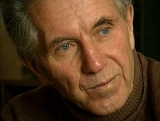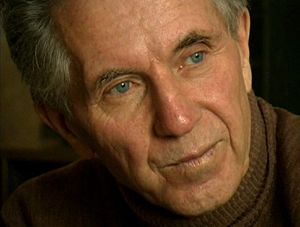
Vassili Nesterenko
Encyclopedia

Belarus
Belarus , officially the Republic of Belarus, is a landlocked country in Eastern Europe, bordered clockwise by Russia to the northeast, Ukraine to the south, Poland to the west, and Lithuania and Latvia to the northwest. Its capital is Minsk; other major cities include Brest, Grodno , Gomel ,...
and a former director of the Institut of Nuclear Energy at the National Academy of Sciences of Belarus
National Academy of Sciences of Belarus
The National Academy of Sciences of Belarus is the national academy of Belarus.-History:...
. He was born in Krasny Kut Village, Luhansk Oblast
Luhansk Oblast
Luhansk Oblast ) is the easternmost oblast of Ukraine. Its administrative center is Luhansk. The oblast was established in 1938 and bore the name Voroshilovgrad Oblast in honor of Kliment Voroshilov....
, Ukraine
Ukraine
Ukraine is a country in Eastern Europe. It has an area of 603,628 km², making it the second largest contiguous country on the European continent, after Russia...
. He had a diploma from the Bauman Moscow State Technical University. He worked on the consequences of the Chernobyl disaster
Chernobyl disaster
The Chernobyl disaster was a nuclear accident that occurred on 26 April 1986 at the Chernobyl Nuclear Power Plant in Ukraine , which was under the direct jurisdiction of the central authorities in Moscow...
.
Since 1990, he had been the director of the Belarusian Independent Institute of "Belrad", created in 1989 with the help of Andrei Sakharov
Andrei Sakharov
Andrei Dmitrievich Sakharov was a Soviet nuclear physicist, dissident and human rights activist. He earned renown as the designer of the Soviet Union's Third Idea, a codename for Soviet development of thermonuclear weapons. Sakharov was an advocate of civil liberties and civil reforms in the...
, Ales Adamovich
Ales Adamovich
Ales Adamovich was a Soviet writer and a critic, Professor and Corresponding Member of the Academy of Sciences of Belarus, Doctor of Philosophy in philology, Doctorate in 1962 ; the people's deputy...
and Anatoly Karpov
Anatoly Karpov
Anatoly Yevgenyevich Karpov is a Russian chess grandmaster and former World Champion. He was the official world champion from 1975 to 1985 when he was defeated by Garry Kasparov. He played three matches against Kasparov for the title from 1986 to 1990, before becoming FIDE World Champion once...
.
Because of his activities, he lost his job and got problems with the State Security Agency of Belarus, which threatened him with internment in a psychiatric asylum. Later, however, the Belarusian government tried to soften him proposing him to get back a job in a state institute, "at the condition that he would not work on Chernobyl anymore." He escaped two assassination attempts.
Work in Chernobyl
Nesterenko intervened immediately after news of the accident in the nuclear power plant started to spread. As an expert on the subject and with his experience as a fire fighter, he threw liquid nitrogenLiquid nitrogen
Liquid nitrogen is nitrogen in a liquid state at a very low temperature. It is produced industrially by fractional distillation of liquid air. Liquid nitrogen is a colourless clear liquid with density of 0.807 g/mL at its boiling point and a dielectric constant of 1.4...
containers from a helicopter on the burning reactor core. To do this he had to move into the middle of radioactive smoke. Despite the heavy radioactive contamination of the area, Nesterenko survived. However, of the four passengers of his helicopter, three died from radioactive irradiation and contamination.
Nesternko founded in 1990 the Institute of Radiation Safety (BELRAD),which carries out "radiation monitoring of the inhabitants of Chernobyl zone and their foodstuffs, development of measures on maintenance of radiation safety and protection of the population on territories, contaminated by radionuclides by realization of necessary scientific researches, development and organization of implementation of their results in practice."

